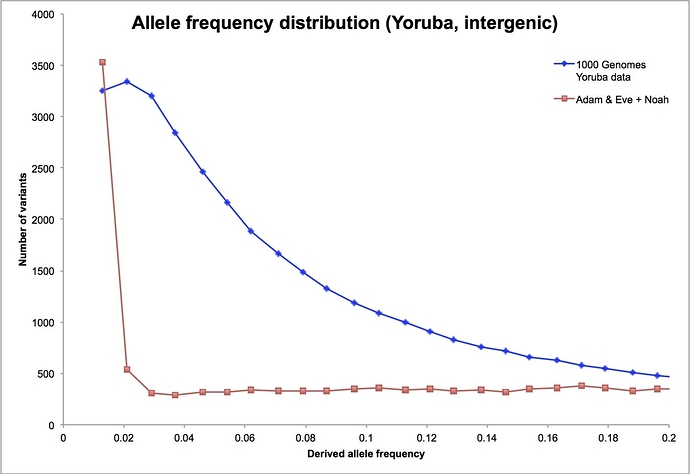The discussions on genetic diversity, most recent common ancestors, pop modelling, and Adam and Eve has, imo, undergone such twists and turns over the years on this site, that I find it difficult to develop any coherent view of the protagonists. One extreme view seems to focus on Adam and Eve as the initial couple, and all humans are descended fro them over the past 6,000, while the other extreme insists there was no Adam and Eve, that all humans and primates have a common ancestor, and any differences are relatively minor, or a matter of degrees. There seem to be ‘in-between’ views, such as non-historic symbolic A&E, some type of archetype or representative A&E, and other views that, for the life of me, I cannot make any sense.
Since the EC view seems to oscillate about some type of Adam and Eve as a historic couple, and no couple but someone representative of modern humans, I have tried to understand this point of view based on various models on human population distribution. The interesting models use data that is: (a) historic - recorded for many centuries, and I suppose estimated from ancient times, using a stochastic model that accounts for a recent common ancestry based on a couple, and the current population and distribution forming over 6-10,000 years; and (b) data derived from genetics from a relatively large sample of modern human beings, and the genetic diversity is rationalised using a model that assumes a bottle neck of a relatively small population, and this spread from Africa, for over a lengthy period (I recall perhaps 1.6 million years, but I can be corrected on this). I have tried to point out the assumptions inherent in these approaches and caution against making biblical conclusions from them.
There are other reports, such as the one I referred to for Australians, and these require 20-40,000 years to account for genetic diversity, bottleneck and migration from New Guinea. Btw, artifacts, caves and paintings in Australia have been reported to be 40,000 years old, and these require a viable population to produce them.
My involvement in this tortuous discussion exchange over perhaps a year, has been to point out the assumptions built into any model, and to show that none of these replace or negate the Biblical story of Adam and Eve, as understood by Orthodox Christianity.
As an aside, I recall looking pictures of Adam and Eve and the picture of God’s figure imparting life to Adam (Michelangelo) and racked my brain to see if I could think of anything like these images in the Orthodox Churches I have attended. I could be wrong, but I cannot recall one icon or painting of this sort - I think this is one way of showing the different emphasis Orthodoxy may place on this subject matter.
In any event, I trust this detailed response (ramble) may be helpful to someone on this site.



